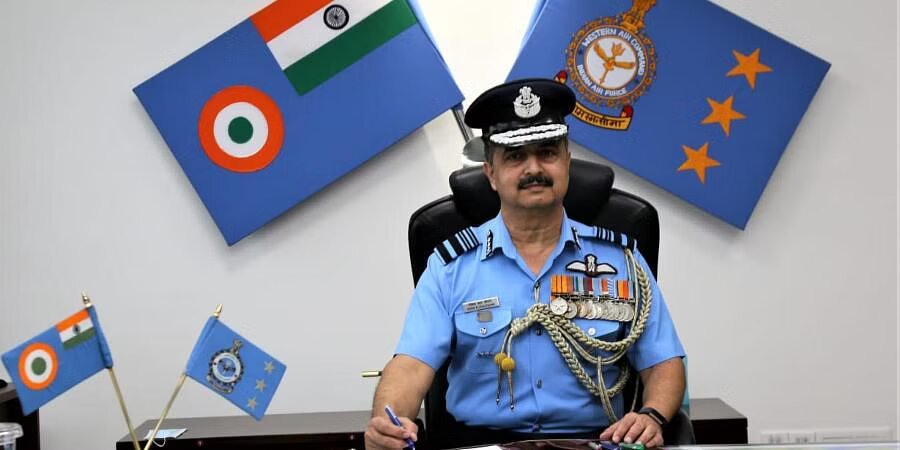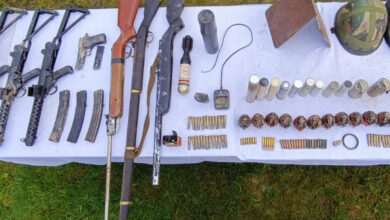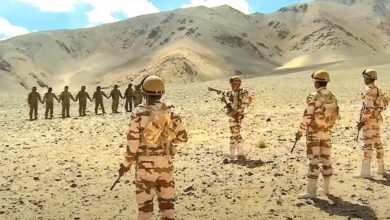IAF Chief: “Self-reliance” Should Include Design And Development, Not Just Production

- The head of the IAF said that advanced technologies in unmanned aerial vehicles (UAVs) are getting more and more useful and will continue to do so in the future.
- He said that big improvements in radar and stealth technology have led to a game of cat and mouse between radars, surface-to-air missile systems, and attacking aircraft.
As the country focuses more on being self-sufficient in defence, Indian Air Force Chief Air Chief Marshal VR Chaudhari said on Tuesday that Atmanirbharta should include not only production but also design and development. He also said that offensive and defensive space capabilities should be built to protect assets, and directed energy weapons should be made that are much better than traditional weapons.
He said that collaboration between stakeholders was necessary to become self-sufficient, and that without it, “we will wallow in the dark.”
Chaudhari said at a seminar on India’s Aerospace Capabilities and Technology Requirements, “The key to faster development of niche technology is to identify core areas of development, clearly state requirements, and work closely with the industry to design and build the technology.”
It does not end here, he said.
“Well-known companies in the public sector that make defence equipment must help get the new technology onto the market and into mass production. If everyone doesn’t work together, I’m afraid we’ll stay in the dark and make no real progress,” the head of the IAF said.
His comments come at a time when one of the government’s top goals is to make the defence manufacturing sector more self-sufficient.
He said that research and development, as well as the making of platforms, sensors, and weapons, will be very important for building up future capabilities.
The ongoing conflict between Russia and Ukraine has shown that technological capability needs to be paired with combat sustenance. “Our defence industries need to adopt the twin mantras of technical quality and production scalability to meet the needs of armed forces in any future conflict,” he said.
General Anil Chauhan, India’s chief of defence staff, said at the beginning of March that one of the most important things India could learn from the ongoing Russia-Ukraine conflict was how to make its own defences. He said that the three services would have to be the driving force for the campaign to be successful.
In the last three years, the government has done a lot to help people become more independent. Among these are making a separate budget for buying military equipment made in the country, raising foreign direct investment (FDI) from 49% to 74%, and telling the government about as many as 411 weapons and systems that can’t be brought in.
The race to put weapons in space has already begun, and China has been making steady progress. The IAF chief said that the next war will likely be fought on land, sea, air, cyberspace, and in space.
“We need to build on our early successes in space and get ready for what’s to come. Chaudhari said that the Indian aerospace industry and other players like the Indian Space Research Organisation (ISRO) and the Defence Space Agency (DSA) need to work together to plan for the future.
“The weapons of India in the year 100 would look very different from the weapons of India in the year 1975,” he said, pointing out that technology is likely to change a lot in the next 25 years. He said that technology grows at a super exponential rate and that its effects are also very large.
“Directed energy weapons, especially lasers, have a lot of advantages over traditional weapons. They can be used with more accuracy, cost less per shot, help with logistics, and are hard to find. Our defence industries need to keep working on these weapons and put them on platforms in the air to get the range and accuracy we want.
Air Marshal Anil Chopra (ret. ), director general of the Centre for Air Power Studies, said that over the years, India has learned how to make its own defences based on foreign designs.
“If we really want to be self-sufficient, the next step is to make modern systems and own the intellectual property rights to them. This will not only help us make systems for the future, but it will also let us ship them to any country we want. Also, the next frontier we need to pay attention to is space. We understand the basics of space technology, but we need a lot more satellites because China is way ahead of us in this area. Developing directed energy weapons is also important because they can hit targets at the speed of light and can be used over and over again.
Chaudhari said that the air force’s main goal was to build up its own skills and improve its older equipment.
“We agree with the government’s push for Atmanirbharta, and we’re looking forward to getting light combat aircraft (LCA) Mk 1A, HTT-40 trainers, weapons made in India, and a wide range of radars in the next few years. The Light Combat Helicopter (LCH) has been put into service, and I am sure that it will improve the IAF’s ability to strike. We are fully committed to making the LCA Mk 2 and the advanced medium combat aircraft (AMCA). The addition of C-295 aircraft is a step in the right direction and will help the Indian aerospace manufacturing ecosystem.
The Indian company Tata Advanced Systems Limited (TASL) and the European company Airbus Defence and Space will work together to make the C-295 medium transport aircraft. Prime Minister Narendra Modi laid the foundation stone for the C-295 manufacturing facility in Vadodara, Gujarat, on October 30, 2022. This helped the government’s Make in India initiative.
The head of the IAF said that advanced technologies in unmanned aerial vehicles (UAVs) are getting more and more useful and will continue to do so in the future.
“The military will need a lot more unmanned combat aerial vehicles/UAVs in the future because of the way technology is changing in terms of swarms and other things,” he said.
He said that big improvements in radar and stealth technology have led to a game of cat and mouse between radars, surface-to-air missile systems, and attacking aircraft.
“We need to use this technology to meet our needs in the future and stay ahead of the game. “As a country, we need to put more effort into research and production in stealth and anti-stealth technologies,” said Chaudhari.







Facebook Comments